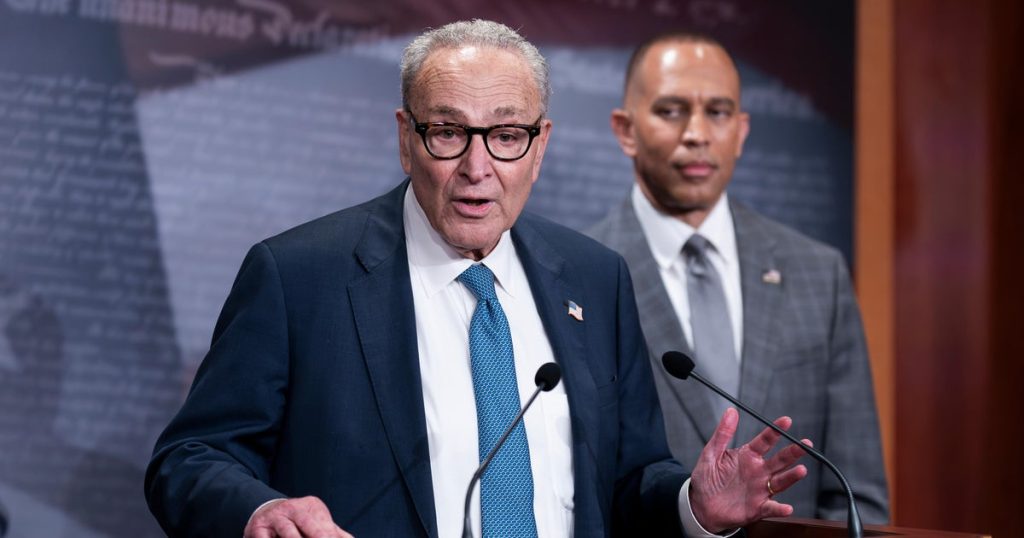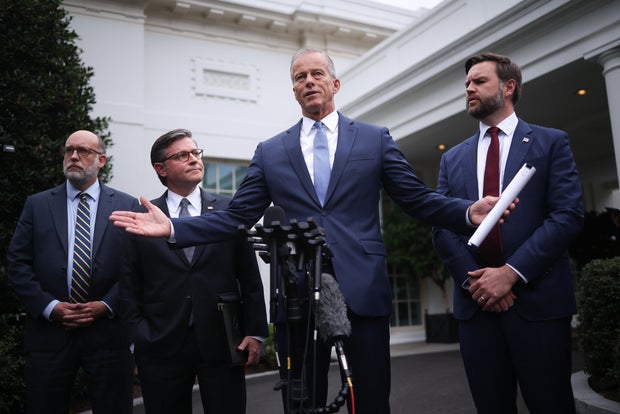Washington — The federal government will begin shutting down at 12 a.m. on Wednesday if lawmakers do not reach an agreement to extend government funding, an outcome that appears more and more likely as the deadline approaches.
Republicans and Democrats have been at odds over how to fund the government as Democrats have pushed for negotiations over health care tax credits to be included in a funding measure. Without an extension or approval of another funding bill, spending authority is set to expire, sending the federal government into a shutdown.
Each agency and department would begin shutdown procedures on Wednesday morning, leading to hundreds of thousands of workers being placed on furlough. Essential employees will stay on the job, but nearly all employees, whether furloughed or not, will go without pay for the duration of the funding lapse.
The likely shutdown is the result of weeks of disagreements between Republicans and Democrats in Washington over funding the government. Here’s the back story:
How Congress funds the government
Mariam Zuhaib / AP
Each year, Congress faces a deadline to approve government funding by the start of a new fiscal year on Oct. 1. The Constitution outlines that Congress must approve any money spent by the federal government. Bills to approve that spending must originate in the House, pass the Senate and be signed by the president before departments and agencies can use the funds.
The government funding process often stretches late into the fiscal year, and in recent decades Congress has nearly always resorted to stopgap measures to keep the government funded in order to give lawmakers more time to approve new spending.
The funding fights often go down to the wire, as the minority looks to use its leverage to extract concessions. But lawmakers also have strong incentives to avoid shutdowns, since they can be economically and politically costly. The last funding lapse stretched from December 2018 until January 2019 and caused a permanent loss of about $3 billion, according to the Congressional Budget Office.
The 2025 funding fight
This time around, Democrats have refused to help Republicans in the majority extend government funding without addressing health insurance subsidies that are set to expire at the end of the year. Republicans have been steadfast in their belief that health care and other issues should be negotiated outside the context of funding the government, and urged Democrats to agree to a temporary funding extension.
On Sept. 19, House Republicans passed what’s known as a continuing resolution to keep the government funded at existing levels until Nov. 21. Republicans touted the “clean” continuing resolution that would give lawmakers more time to work out full-year spending bills. But Democrats insisted that Republicans negotiate with them on the funding plan to earn their support.
Win McNamee / Getty Images
Although Republicans have majorities in the House and Senate, most legislation in the upper chamber is subject to a 60-vote threshold to advance. With 53 Republicans, Democratic support is necessary.
Meanwhile, Democrats pushed their own proposal to avert a shutdown with a bill that would keep the government funded until Oct. 31. Their bill also includes a number of their priorities, including a permanent extension of enhanced tax credits for Americans who purchase health insurance through the Affordable Care Act marketplace, which became a red line for their support.
Both the House-passed bill and the Democratic proposal fell short in the Senate, as the two parties became locked in a stalemate over the funding plan. And a decision by House GOP leaders to keep the House away from Washington until after the funding deadline has all but ruled out alternate paths forward.
A meeting between President Trump and the congressional leaders on Monday failed to yield an agreement, with the two sides trading blame for what appears to be an inevitable shutdown.
What happens during a shutdown
Should the government shut down, lawmakers will have to agree to a spending bill to eventually reopen the government.
In the meantime, federal agencies will be forced to halt non-essential functions. The Congressional Budget Office estimated on Tuesday that about 750,000 federal employees could be furloughed, though they would receive back pay at the end of a shutdown. The total daily cost of their compensation would be around $400 million. The budget office noted that the effects of a shutdown “depend on its duration and on an Administration’s decisions about how to proceed.”
Among those employees who are deemed essential are active-duty military members, many federal law enforcement officers and employees at federally funded hospitals, along with air traffic controllers and Transportation Security Administration officers. Each agency decides which employees are essential. Tens of thousands of others can stay on the job because their pay is funded through other means, like other legislation or fees.
Adding to the dynamic, the White House’s Office of Management and Budget sent a memo to federal agencies last week telling them to consider reduction-in-force notices, or layoffs, for federal employees in discretionary programs. Mr. Trump said Tuesday that during a shutdown, “we can cut large numbers of people out,” though he added, “we don’t want to do that, but we don’t want fraud, waste and abuse.”
Back in Congress, Senate Majority Leader John Thune told reporters Tuesday that he expects the upper chamber to take additional votes to open up the government this week, though he noted that senators will observe the Jewish holiday, Yom Kippur, which begins at sundown on Wednesday and ends Thursday evening. The Senate could approve the House-passed continuing resolution and send it to the president’s desk to bring a shutdown to an end.
How long a shutdown could last remains to be seen. During the last shutdown, the longest in history, lawmakers approved a stopgap measure to reopen the government after 34 days.




